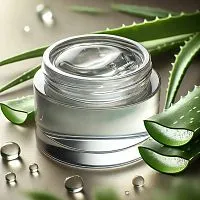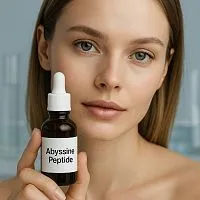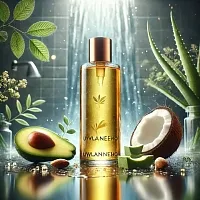-
 Absolutes
Absolutes
-
 Active Complexes
Active Complexes
-
 Actives and Peptides for Cosmetics
Actives and Peptides for Cosmetics
-
 Amino Acids
Amino Acids
-
 Food Flavorings
Food Flavorings
-
 Ayurveda
Ayurveda
-
 Vitamins
Vitamins
-
 Gelling Agents and Thickeners
Gelling Agents and Thickeners
-
 Hydrosols and Floral Waters
Hydrosols and Floral Waters
-
 Hydrolyzed Proteins
Hydrolyzed Proteins
-
 Fragrant and aromatic substances
Fragrant and aromatic substances
-
 Acids, Salts, Alcohols, and Alkalis
Acids, Salts, Alcohols, and Alkalis
-
 Preservatives and Antioxidants
Preservatives and Antioxidants
-
 Cosmetic Raw Materials
Cosmetic Raw Materials
-
 Dyes, Pearlescents, and Glitters
Dyes, Pearlescents, and Glitters
-
 Face Masks, Scrubs, and Dried Flowers
Face Masks, Scrubs, and Dried Flowers
-
 Oils, batters, macerates, oil mixtures
Oils, batters, macerates, oil mixtures
-
 Candle Supplies
Candle Supplies
-
 Melt and Pour Soap Bases
Melt and Pour Soap Bases
-
 Base for cosmetics, cream, serum, shampoo
Base for cosmetics, cream, serum, shampoo
-
 Fragrance Oils
Fragrance Oils
-
 Surfactants
Surfactants
-
 Peelings for Skin
Peelings for Skin
-
 Herbal Powders and Plant
Herbal Powders and Plant
-
 Silicones and Conditioning Surfactants for Hair
Silicones and Conditioning Surfactants for Hair
-
 Raw materials for dietary supplements
Raw materials for dietary supplements
-
 Packaging for Cosmetics and Perfumes
Packaging for Cosmetics and Perfumes
-
 Molds, Packaging, Tools
Molds, Packaging, Tools
-
 Organic Extracts
Organic Extracts
-
 Emollients for Cosmetics
Emollients for Cosmetics
-
 Emulsifiers
Emulsifiers
-
 Essential Oils
Essential Oils
Phenol 10%: A Potent Component for Professional Skin Resurfacing
Phenol 10%, also known as Carbolic Acid, is a powerful chemical component widely recognized in professional dermatological and aesthetic practices for its significant effects in skin peeling, rejuvenation, and deep cleansing. Sourced from the USA, this liquid solution offers a unique blend of ingredients designed to facilitate controlled skin exfoliation and revitalization. Its characteristic odor and high solubility in various solvents underscore its potent chemical nature.
Description and Composition
Phenol 10% is presented as a liquid with a characteristic odor, indicating its chemical composition. Beyond the active Phenol (Carbolic acid), the formulation also includes a complex blend designed to support its action and potential delivery:
- Water, Glycerin: Provide a base for the liquid formulation, acting as humectants to help with hydration.
- Steareth-20: An emulsifier, aiding in the stability of the solution.
- N-hydroxysuccinimide, Chrysin, Palmitoyl Oligopeptide, Palmitoyl Tetrapeptide-7: These are often found in formulations targeting dark circles and puffiness, suggesting a potential ancillary benefit or a formulation designed for specific professional aesthetic treatments, possibly to mitigate post-peel inflammation or enhance skin recovery.
- Chlorhexidine Digluconate (20% in water): 1%: A powerful antiseptic and disinfectant, crucial for preparing the skin and preventing infections, especially vital in a peeling procedure.
- Potassium Sorbate: 0.1%: A common cosmetic preservative, ensuring product stability and preventing microbial growth.
The diverse solubility profile of Phenol 10% in water, alcohol, alkali, benzene, and acetone highlights its chemical versatility, though its primary application in cosmetic contexts focuses on its aqueous solution properties.
Professional Applications and Usage Areas
Phenol 10%, particularly in the context of professional chemical peels, is utilized for its profound effects on skin regeneration and deep dermal remodeling. Its applications are highly specialized and require expert knowledge and controlled environments.
-
Deep Chemical Peeling:
- Phenol peels are classified as deep chemical peels, designed to penetrate the skin significantly deeper than superficial or medium peels. A 10% concentration of Phenol might be used as part of a multi-acid peel system or for more controlled, targeted applications, rather than a full deep peel usually associated with much higher concentrations (e.g., 88% or Baker-Gordon formula).
- They are professionally applied to address severe sun damage, deep wrinkles, pronounced fine lines, and significant scarring (such as severe acne scars). The peeling action removes damaged outer layers of skin, stimulating collagen production and revealing a smoother, more even-toned complexion.
- This process facilitates dramatic skin resurfacing, leading to significant improvements in skin texture and overall appearance.
-
Skin Rejuvenation:
- Beyond just peeling, Phenol promotes cellular turnover and collagen remodeling. This can lead to a long-lasting rejuvenated effect, improving skin elasticity and firmness.
- It is used to address pigmentation issues, including stubborn age spots, melasma, and other forms of hyperpigmentation that are resistant to lighter peels.
-
Deep Cleansing and Blemish Treatment (Professional Use Only):
- In a professional setting, the strong antiseptic properties of Phenol, combined with its exfoliating action, can contribute to a profound cleansing effect on the skin. This can be beneficial in severe cases of acne or other skin conditions where deep purification and removal of clogged pores are necessary, always under strict medical supervision due to the potent nature of the chemical.
Important Considerations for Use:
- Medical Supervision is Paramount: Due to the potency of Phenol, its use is strictly limited to trained medical professionals (dermatologists, plastic surgeons, or licensed aestheticians under medical direction) who have expertise in chemical peels and can manage potential side effects.
- Controlled Environment: Procedures involving Phenol require a controlled clinical environment, often with cardiac monitoring for higher concentrations, as systemic absorption can occur.
- Pre- and Post-Care: Extensive pre-peel preparation and rigorous post-peel care are crucial for patient safety and optimal results. This includes strict sun avoidance and specialized wound care.
- Potential Side Effects: Risks include severe burns, scarring, permanent pigmentation changes (especially in darker skin tones), infection, and systemic toxicity affecting the heart, kidneys, or liver.
Cosmetic Recipe (For Professional Use Only): Targeted Phenol 10% Spot Treatment for Severe Scarring
Note: This "recipe" describes a theoretical application in a professional setting and is NOT for home use. The application of such a product requires extensive training, specialized equipment, and medical oversight.
| Component | Theoretical Concentration | Function in Professional Application |
|---|---|---|
| Phenol 10% Solution | 100% | Primary active for deep exfoliation and skin remodeling |
| Protective Barrier (e.g., Petroleum Jelly) | As needed | Applied to surrounding skin to prevent product migration |
| Neutralizing Agent (e.g., Water or Sodium Bicarbonate Solution) | As needed | Used to stop the peeling process |
| Post-Peel Ointment (e.g., Bacitracin or specific healing balm) | As needed | Promotes healing and prevents infection |
| Sunscreen (SPF 50+) | Daily | Essential for protection during healing and long-term care |
Professional Application Protocol (Simplified - DO NOT ATTEMPT AT HOME):
- Patient Preparation: Skin is thoroughly cleansed and degreased. A protective barrier (e.g., petroleum jelly) is applied to areas not being treated to prevent solution spread.
- Application: The Phenol 10% solution is meticulously applied to the targeted severe scar or specific area using a cotton-tipped applicator or fine brush. The application is precisely controlled to ensure only the intended area is treated.
- Observation: The professional observes the skin's reaction, looking for "frosting" (a white appearance indicating protein coagulation), which signifies the depth of penetration.
- Neutralization: The solution is allowed to act for a very specific, short duration (seconds to a minute), then immediately neutralized with water or a sodium bicarbonate solution to stop the chemical reaction.
- Post-Treatment: The treated area is carefully cleaned and a healing ointment is applied. Strict post-care instructions are given to the patient, including diligent sun protection, gentle cleansing, and avoiding picking at the peeling skin.
Recommendations for Professional Use:
- Patient Selection: Critical. Only suitable candidates with specific skin concerns and no contraindications should be considered.
- Training and Expertise: Only highly trained and certified medical professionals should handle and apply Phenol solutions.
- Patch Testing: A small test area may be performed to assess skin reaction, especially for sensitive individuals.
- Client Education: Patients must be fully informed about the procedure, expected downtime, potential risks, and the importance of stringent post-care.
- Layering/Contact Time: The concentration and contact time of Phenol 10% must be carefully controlled to prevent excessive penetration and adverse reactions.
- Legal and Regulatory Compliance: Always adhere to local and international regulations regarding the sale, distribution, and professional application of Phenol-containing products.
And also go to the Blog from Мыло Опт, where we share useful information about creating the right natural cosmetics
| INCI | Carbolic acid | |
| Other | ||
| Application | peeling, rejuvenation, cleansing | |
| Color product | appropriate | |
| Composition | water, glycerin, steareth-20, N-hydroxysuccinimide, chrysin, palmitoyl oligopeptide, palmitoyl tetrapeptide-7, chlorhexidine digluconate (20% in water): 1%, potassium sorbate: 0.1%. | |
| Descriptio smell | characteristic | |
| Features | All information presented on the site is for reference only | |
| Minimum count | 1 | |
| Name | Phenol 10% 1 L | |
| Packaging | container for transportation | |
| Packing | 1 liter | |
| Solubility | water, alcohol, alkali, benzene, acetones | |
| View | liquid | |
-
Date:5 DecemberAuthor:Ника, БелфастReviews
Косметика виходить чудовою завдяки вашим інгредієнтам.
Date:5 DecemberAuthor:Юна, КельнReviewsРекомендую этот магазин всем, кто хочет заботиться о своей красоте и здоровье естественным путем.









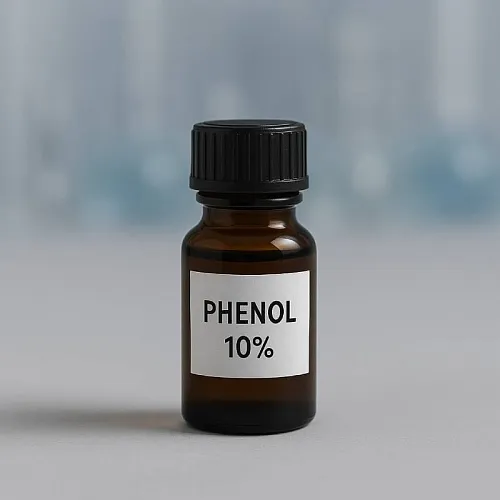
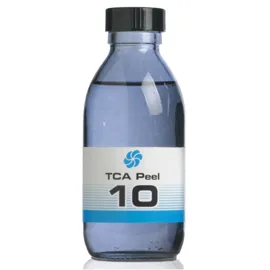


 Add to cart
Add to cart Buy in 1 click
Buy in 1 click

 Add a review
Add a review To favorites
To favorites To compare
To compare







